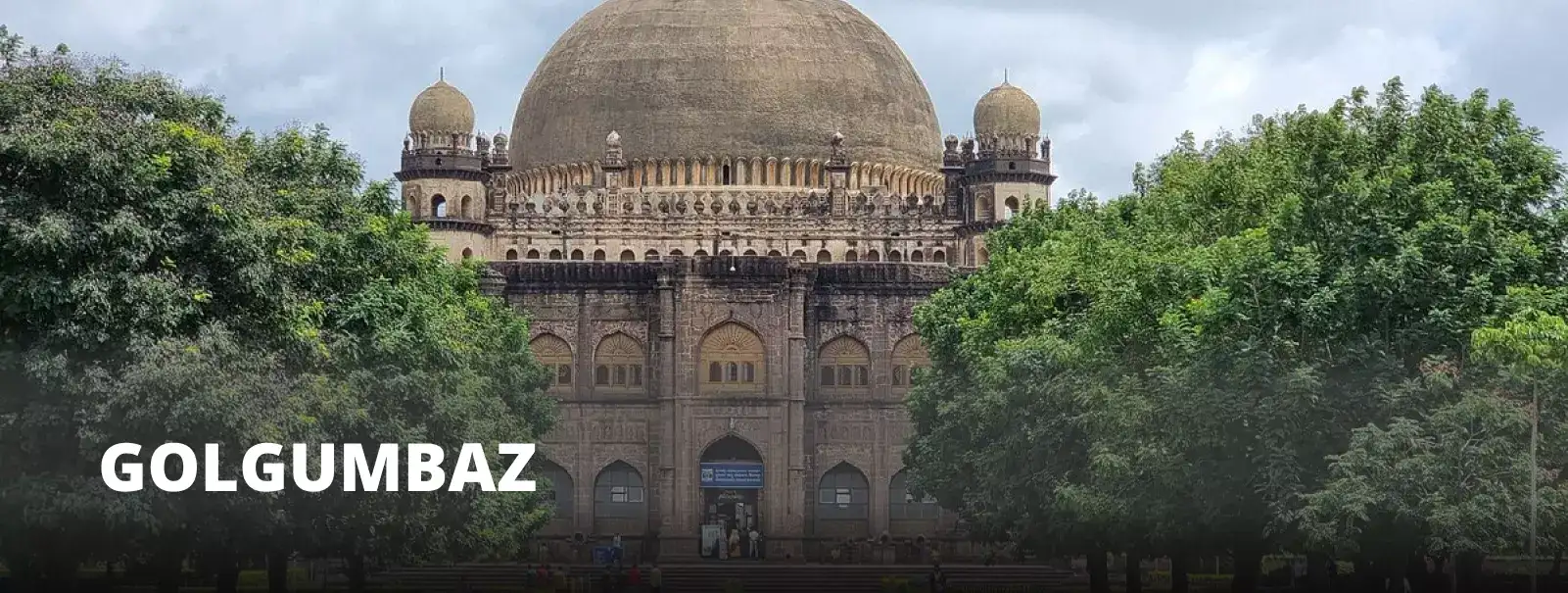
The magnificent Gol Gumbaz is a historic monument and place of center attraction located in the Bijapur district of Karnataka. It is a crypt of Mohammad Adil Shah, who was the Sultan of Bijapur and the seventh ruler of the Adil Shah Dynasty. This majestic monument was constructed by the architect Yaqut of Dabul in the year 1656, as per the Deccan architecture and is one of the most significant monuments of India. Deriving its name from ‘’Gola Gummata’’ or ‘’Gol Gombadh’’, which means a ‘’circular dome’’, Gol Gumbaz has the second largest dome in the world after St. Peter’s Basilica.
The grand structure of the monument is composed of a huge cube surrounded by four pillars with small domes on top of each. Inside the gigantic dome, ‘’whispering gallery’’ runs around which are named so, because even the slightest sound can be caught on the other side due to auditory range of the space and echoes more than ten times. Constructed from Dark Grey Basalt, the monument proudly exhibits the Deccan Indo-Islamic style of architecture and is a memorial renowned for its dimensions and unique acoustic features. Maintained by the Archaeological Survey of India, the construction of Gol Gumbaz began in the year 1626 AD and took about 30 years to complete the structure. Also referred to as the ‘Taj Mahal of South India’ because it is the crypt of Mohammad Adil Shah along with the resting place of his wives and daughters. Gol Gumbaz is an imposing structure of national importance and of architectural significance, hence it is visited by travelers from across the borders throughout the year.
The construction of Gol Gumbaz was initiated by Mohammad Adil Shah himself to bury his mortal remains right after his ascent to the throne in 1626. The plan was to build a mausoleum comparable and possibly grander in scale than the Ibrahim Rauza, the tomb of Adil Shah’s father, Ibrahim Adil Shah II. The ornamentation and composition of Gol Gumbaz is like Ibrahim Rauza which has very intricate details, but the size is even grander in case of Gol Gumbaz, in fact one of the largest domes in the world. The construction went on throughout Mohammad Adil Shah’s regime but could not be executed to full magnitude because of the sudden demise of Sultan in 1656. Along with the grave of Adil Shah, buried are his two wives, Taj Jahan Begum and Aroos Bibi, his mistress Rambha, his daughter, and his grandson.

Constructed with an Indo-Islamic style of architecture by Yaqut of Dabul, Gol Gumbaz is one of the major places of attraction in the state of Karnataka and a significant monument of history in terms of architecture. The humongous spherical dome of Gol Gumbaz is one of the largest domes ever built in the history after the dome of St. Peter’s Basilica in Rome, with a diameter of 144 feet and is supported by eight intersecting arches. The main monument that is a cube-like structure has octagonal cross-sectioned towers at each corner and with small domes on top of each. These towers have staircases going through them which leads to floors and ultimately the terrace from where the visitors can go and view the landscape.
Gol Gumbaz has a square shaped podium from inside with steps on each of its sides. The center of this square podium has the cenotaph of Mohammed Adil Shah with a wooden canopy that indicates the exact position of the grave of Adil Shah. The fascinating whispering gallery of Gol Gumbaj is 33.22 meters from the floor and reflects the echoing sounds for more than ten times which is one of its alluring features. Towards the south and the central archway there are inscriptions which denote the date of the Sultan’s demise as 4th November 1656 and the main entrance has been festooned by a ‘Bijlipathar’ that is believed to be a meteorite rock that fell during the Sultan’s rule.
Gol Gumbaz is not only easily accessible but fun to reach if visitors decide to use traditional vehicles like tongas and carts. Bijapur has cycles available near the station which the visitors can use to explore the city and to reach the site. Also, there is a good network of local buses within the buses that ply from all parts of the city at a maximum interval of 15 minutes, or you can directly hire a taxi to reach Gol Gumbaz.

The crypt and the resting place of Mohammed Adil Shah, the Sultan of Bijapur, this splendid circular dome monument was constructed in 1656 according to the Indo-Islamic Deccan architecture in Karnataka. Constructed out of Dark Grey Basalt, Gol Gumbaj is renowned for its dimensions and acoustic features which makes even the slightest sound heard even on the other side of the monument.
Copyright 2012-2022 Indiamap Digital Pvt Ltd. All rights reserved. Privacy Policy | Terms of Use